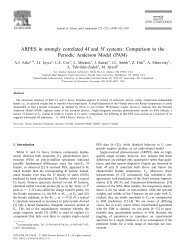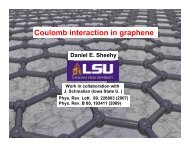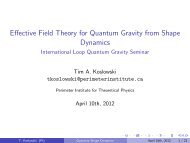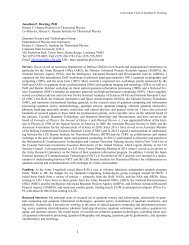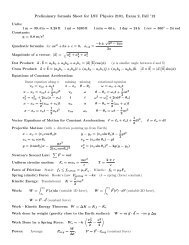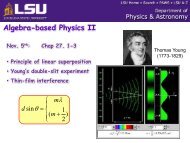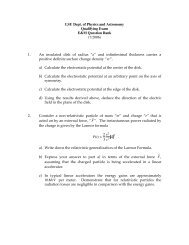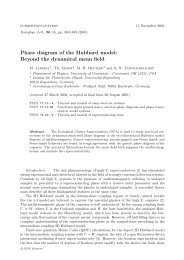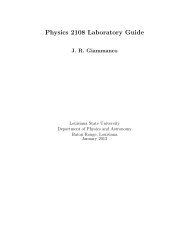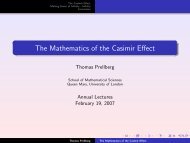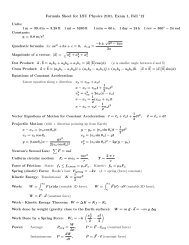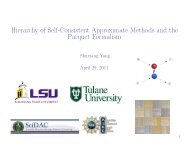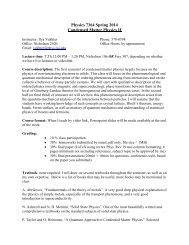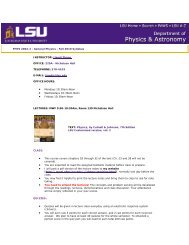1.(lOpts) A car travels 20 kilometers at an average speed of 80 km/h ...
1.(lOpts) A car travels 20 kilometers at an average speed of 80 km/h ...
1.(lOpts) A car travels 20 kilometers at an average speed of 80 km/h ...
- No tags were found...
You also want an ePaper? Increase the reach of your titles
YUMPU automatically turns print PDFs into web optimized ePapers that Google loves.
12. (5pts) Wh<strong>at</strong> is the <strong>speed</strong> <strong>of</strong> the stone just before it hits the cliff?(a) zero(b) 9.8 m/s(c) 55 m/s(d) 67 m/s(e) 38 m/s13. (5pts) An astronaut on the space st<strong>at</strong>ion whirls a 0.5 kg mass <strong>at</strong>tached to a string in acircle <strong>of</strong> radius <strong>1.</strong>6 m. If the <strong>speed</strong> <strong>of</strong> the mass is 8 mIs, wh<strong>at</strong> is the tension in the string?(a) 64 N(b) 32 N(c) <strong>20</strong> N(d) 4.9 N(e) none <strong>of</strong> the above14. (5pts) Two forces are applied to a 2 kg object flo<strong>at</strong>ing out in space. One force has amagnitude <strong>of</strong> <strong>20</strong> N <strong>an</strong>d the other has magnitude <strong>of</strong> 30 N. Which <strong>of</strong> the followingrepresent the minimum <strong>an</strong>d maximum <strong>of</strong> the possible acceler<strong>at</strong>ion th<strong>at</strong> the object c<strong>an</strong>have, depending on the rel<strong>at</strong>ive directions <strong>of</strong> the two forces? (consider magnitudes only)(a) 0.0 m/S2, 15 m/s2(b) 0.0 m/S2, 10 m/s2(c) 2.1 m/S2, 4.4 m/s2(d) 5.0 m/S2, 25.0 m/s2(e) 0.0 m/S2, 8.3 m/s2



